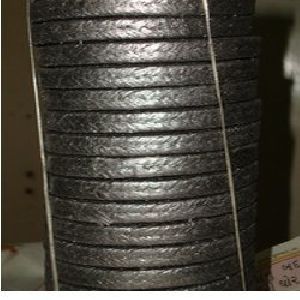
stainless steel wire Braided from high grade asbestos yarn
Get Price Quote
APPLICATIONS / USES : Braided from high grade asbestos yarn suitably lubricated and reinforced with stainless steel wire. This is an ideal choice for high temperature valve application and is suitable for service with steam, butane and propane gases, oil vapour, furnace oil etc. History & knowledgebase on Asbestos Products Some of the first uses of asbestos insulation occurred in the latter half of the 1800s where hot-temperature pipes were a concern. Heat insulation containing asbestos was used for the first time in 1866. A few years later in 1870, the mineral was mixed with cement for boiler coverings. By 1874, asbestos insulation products reached commercial production and were sold on a mass scale.Asbestos Insulation helps conserve energy, lower sound volume, reduce electrical conductivity, and retain hot and cold temperatures. Asbestos, a fire-resistant mineral that was cheap, durable and a poor conductor of electricity, naturally became a key ingredient of these products.Asbestos packings and gaskets are made by different techniques. Yarn can be twisted or braided into different shapes conforming to packing. or gasket requirements. The braided forms or asbestos fabrics can be coated, or impregnated with different compounds. Asbestos cloth is one of the bases for sheet packing, folded, and wound packing. These packings in turn are formed into various shapes and sizes.Sheet asbestos packing is considered one of the first applications of asbestos in the form of packing. This type of packing is available with such different combinations as wire reinforced asbestos fabric, graphite impregnated asbestos fabrics and others. Metallic products can be made from woven cloth which contains asbestos yarn-metal core. This type of construction, impregnated with the various binders, has been very popular and useful in the manufacture of gaskets and packings.Numerous government specifications are available which pertain to asbestos gaskets and packings. The asbestos packing or sheet requirements generally specify type and amount of fiber in proportion to binders and other additives. Parts can be used at temperatures up to about 700°F. For example, for the higher temperature resistant rubber packings, the composition generally specified includes 70 to 75 per cent, by weight asbestos fiber, 9 to 16 per cent rubber, 1 1/2 to 1 per cent sulfur, and 10 to 14 per cent mineral fillers.Braided asbestos packing, which is rubberized and graphited, is suitable for high pressure and high temperature applications. See Figure 10.1. Approximately 10 per cent rubber together with such suitable fillers as talcum and graphite is added in this type of product in order to thicken and build up the body of packings. Graphite is a very popular additive since it principally provides low frictional and binding properties